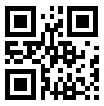
QR Code |

Designed by Denso in Japan, QR (Quick Response) Code is a 2 dimensional general-purpose matrix intended for use on smaller labels. This barcode was also designed for faster scanning of information and efficiently encodes Kanji characters.
QR Code is capable of containing the following characters in each of the four different modes.
Numeric: 0 - 9
Alphanumeric: 0 - 9, upper case A - Z, space, $, %, *, +, -, ., :, /
Binary (8-bit byte): JIS 8-bit character set (Latin and Kana) in accordance with JIS X 0201
Kanji: Shift JIS values 8140 (HEX) – 9FFC (HEX) and E040 (HEX) – EAA4 (HEX). (These are values shifted from those of JIS X 0208. Refer to JIS X 0208 Annex 1 Shift Coded Representation for details.)
It is possible to manually switch between modes in a single barcode by encoding the appropriate mode change command as listed below.
^N will switch to Numeric mode.
^A will switch to Alphanumeric mode.
^K will switch to Kanji mode.
^B will switch to Binary mode.
|
|
If the data stream is Unicode, data that follows ^K and ^B will be converted to the Kanji encoding (see above). Data following ^N and ^A will be converted to the ANSI 1252 (Western languages) encoding. |
An example of switching from numeric to alphanumeric to binary would be something like the following (Note the mode change commands are in bold):
^N12345678^AABCDEFG^B1248
|
|
|
QR Code contains three position detection patterns, data modules in the data area, and an alignment pattern. The orientation of QR Code is determined by the use of the three position detection pattern boxes in the corners. These patterns allow for the barcode to be scanned properly at any orientation. Data is stored in "modules", or dots, in the data area as binary information. Each black module represents a binary 1 and each white module represents a binary 0. The alignment pattern helps the decoding software re-synchronize in case of slight distortion of the code.
Four selectable levels of Reed-Solomon error correction are available which allow a barcode with up to 30% of damaged codewords to still read properly. There are two available "models" for QR Code called Model 1 and Model 2. The original version of QR Code, Model 1, doesn't allow for as many characters as the enhanced version, Model 2. For this reason, it is recommended that all new applications of QR Code use Model 2.
There are 40 different "symbol versions" for the Model 2 QR Code. Each version has a different number of modules comprising the barcode. When you increase the version number, you add 4 additional modules to each side. A Version 1 QR Code will contain 21 modules per side, while a Version 2 QR Code will contain 25 modules. The symbol versions of QR Code range from Version 1 (21x21 modules) to Version 40 (177x177 modules).
The minimum and maximum sizes in for each model are listed below.
Model 1: Minimum 21 x 21 modules to maximum 73 x 73 modules.
Model 2: Minimum 21 x 21 modules to maximum 177 X 177 modules.
The minimum quiet zone on all sides is the equivalent of 4 modules.